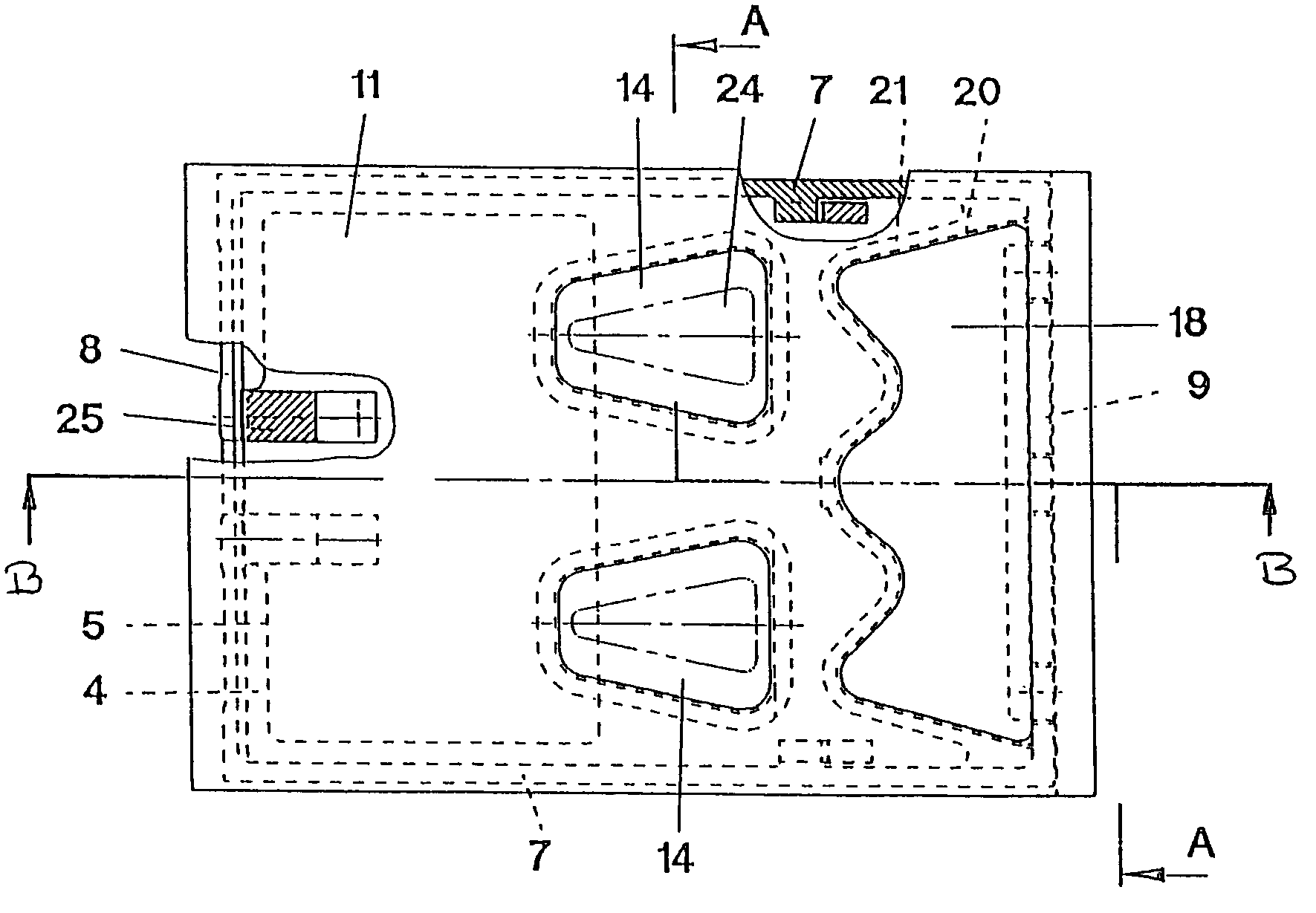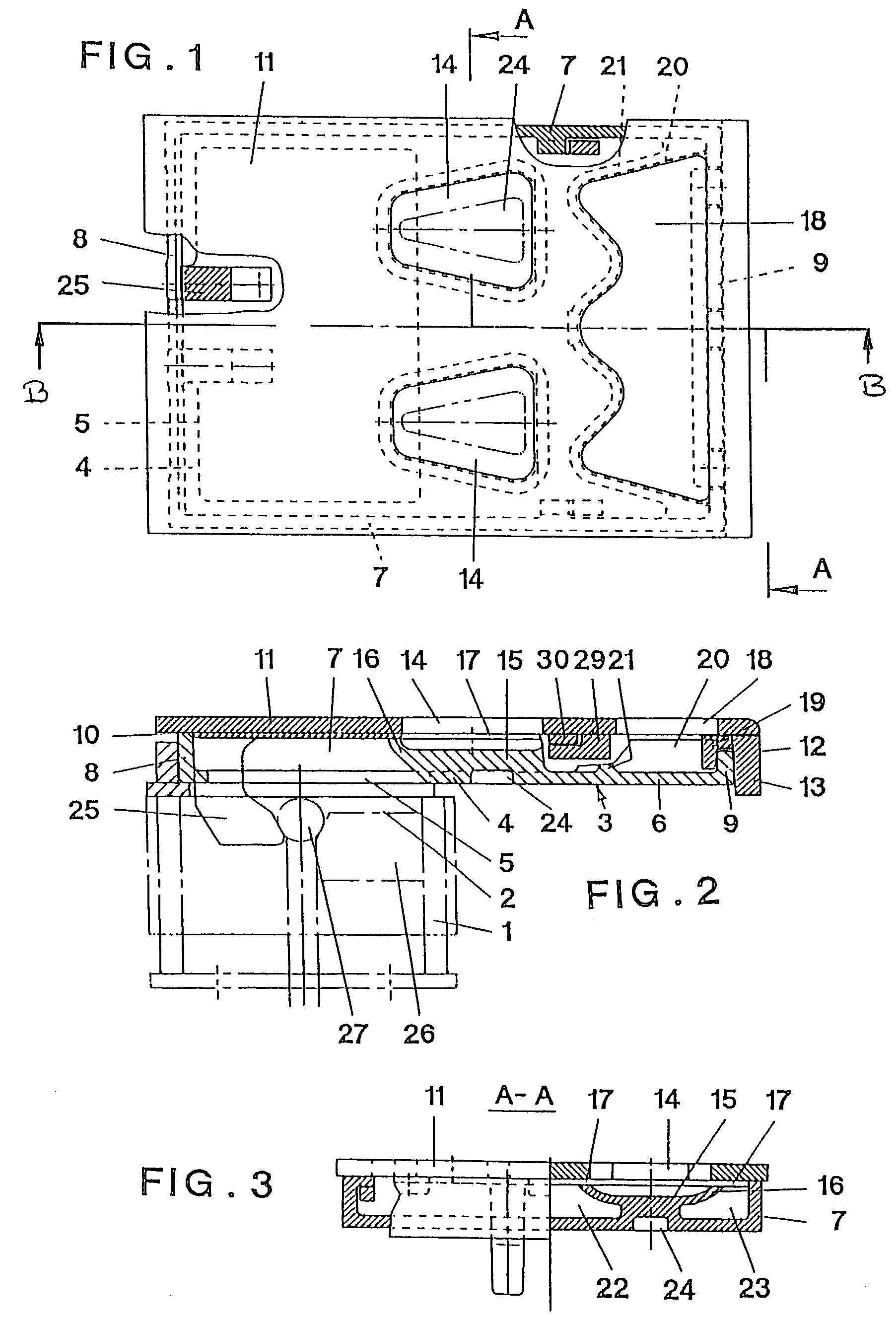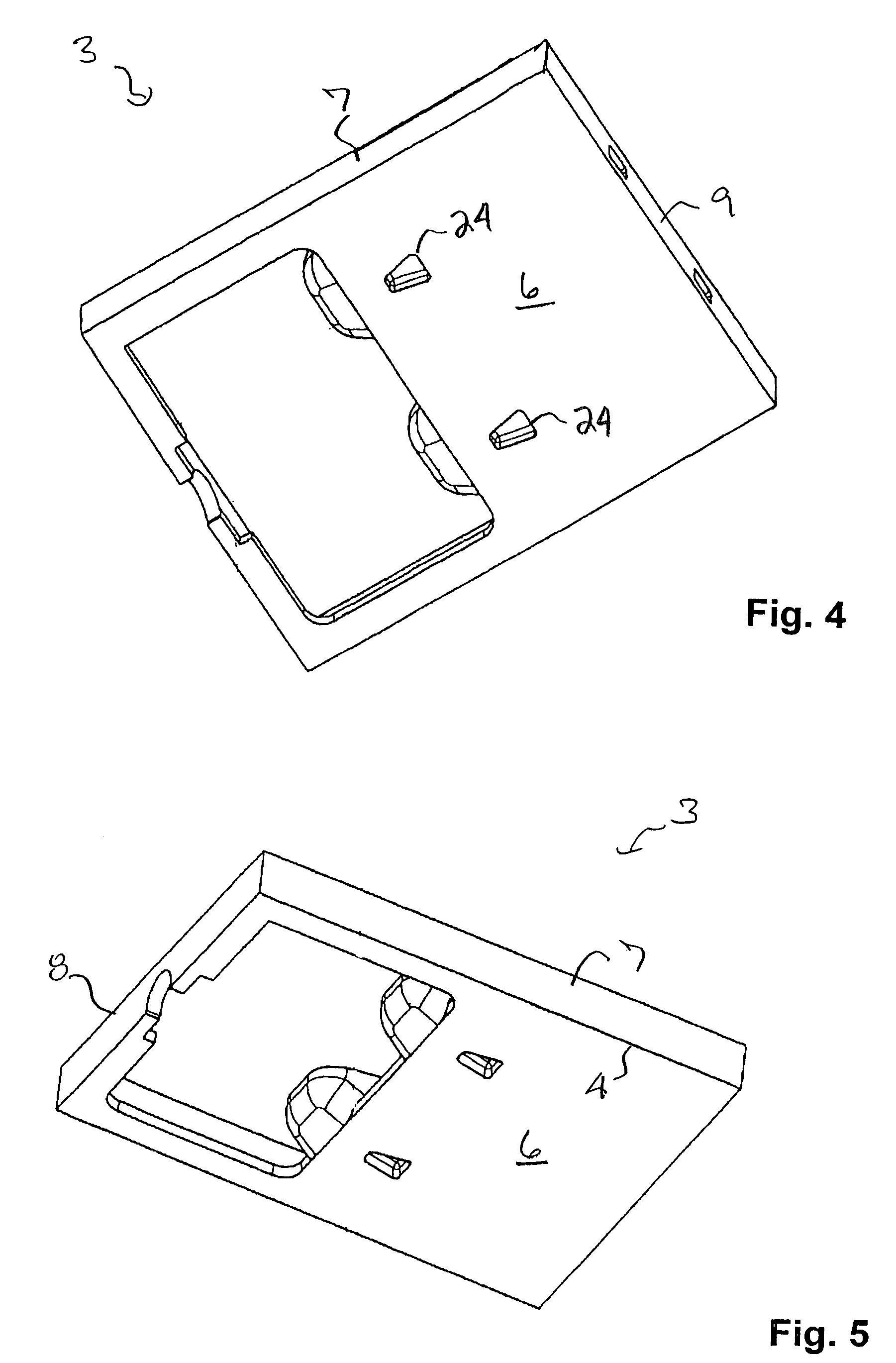Plate for a sliding cooler grate
a cooler grate and sliding technology, applied in the direction of handling discharged materials, combustion processes, lighting and heating apparatus, etc., can solve the problems of arching or warping, rubbing on the topside, and the front edge sinking a littl
- Summary
- Abstract
- Description
- Claims
- Application Information
AI Technical Summary
Benefits of technology
Problems solved by technology
Method used
Image
Examples
Embodiment Construction
[0023]A multiplicity of plates, of which only one appears in the drawing, are arranged next to one another on the grate-plate carrier 1 which is formed continuously over the grate width by one or more hollow profiles. The topside of the grate-plate carrier 1 is cut out in the region of each grate plate to form a cooling-air supply orifice 2. It is surrounded by a top edge, on which the grate plate sits. For this purpose, there is provided on the underside of the support part 3 a correspondingly designed peripheral edge 4 which sits sealingly on the edge of the grate-plate carrier and which encloses the plate-side cooling-air supply orifice 5. The edge 4 has adjoining it forwards in one piece a bottom 6 which extends essentially parallel to the plane of the edge 4. From the edge 4 and the bottom 6 rises a peripheral frame of lateral edge strips 7, of a rear edge strip 8 and of a front edge strip 9 which form an upper bearing surface 10 which is essentially parallel to the topside of ...
PUM
| Property | Measurement | Unit |
|---|---|---|
| thickness | aaaaa | aaaaa |
| cross-sectional size | aaaaa | aaaaa |
| bending stress | aaaaa | aaaaa |
Abstract
Description
Claims
Application Information
 Login to View More
Login to View More - R&D
- Intellectual Property
- Life Sciences
- Materials
- Tech Scout
- Unparalleled Data Quality
- Higher Quality Content
- 60% Fewer Hallucinations
Browse by: Latest US Patents, China's latest patents, Technical Efficacy Thesaurus, Application Domain, Technology Topic, Popular Technical Reports.
© 2025 PatSnap. All rights reserved.Legal|Privacy policy|Modern Slavery Act Transparency Statement|Sitemap|About US| Contact US: help@patsnap.com



